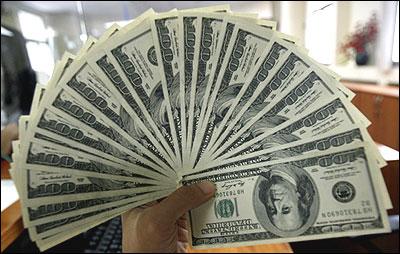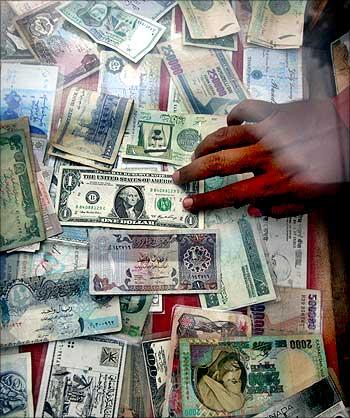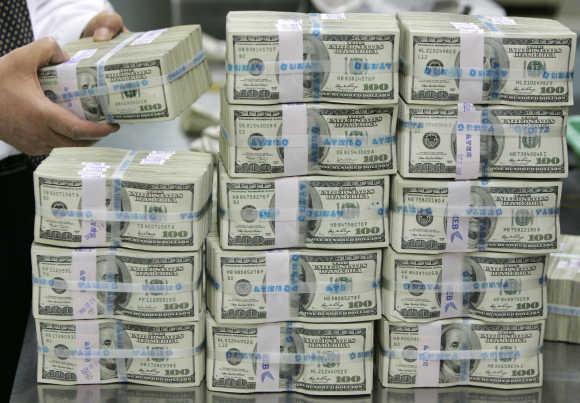 | « Back to article | Print this article |
Which nations received the highest FDI?
Foreign Direct Investment to Asia reached record heights in 2011, according to the United Nations Conference on Trade and Development (UNCTAD) World Investment Report 2012.
The investment figures in the report point out that Foreign Direct Investment (FDI) to Asia, especially to East Asia and South East Asian regions, has recovered with flying colours from the after effects of the 2008 global financial crisis.
While major host economies of Asia including China, Hong Kong (China), Singapore, Indonesia and India attracted the most FDI, last year, FDI outflow from most of these economies have, however, stagnated during the same year, said the annual survey.
Click NEXT to read more...Which nations received the highest FDI?
In South Asia, India was ranked number 1 by finding four-fifths of the total FDI to the region in 2011.
The World Investment Report (WIR) 2012, subtitled "Towards a New Generation of Investment Policies" and released on July 5, 2012, revealed that global FDI inflows of $1.5 trillion, rose 16% in 2011 from 2010, while "surpassing the 2005? pre-crisis level for the first time".
The 2011 FDI to Asia accounted for 27% of the total global FDI inflow.
The total inflow to Asia is also better than 2007 when the total FDI inflow to Asia was at around $349 billion, a mere 17% of the global FDI inflow of $1.97 trillion.
Click NEXT to read more...
Which nations received the highest FDI?
Asian economies managed to be in the top ranking economies receiving the most FDI inflow in 2011.
Globally, USA was again the top FDI recipient at $227 billion, followed by China at $124 billion, Belgium at $89 billion, Hong Kong at $83 billion and Brazil at $66.6 billion in 2011.
Singapore was the sixth highest FDI recipient of $64 billion in 2011, followed by United Kingdom at $53.9 billion, Russian Federation with $52.8 billion, Australia $41.3 billion, France $40.94 billion, Canada $40.93 billion, Germany $ 40.4 billion and India at $ 31.5 billion.
Click NEXT to read more...
Which nations received the highest FDI?
Lower down the ladder were Indonesia that received around $ 18.9 billion while Malaysia received around $ 11.9billion.
Even then Indonesia saw a 37% increase in FDI last year from 2010's $13.8 billion, Singapore experienced a 33% increase in FDI last year from 2010's $ 48.6 billion, India nearly 31% from $24.16 billion in 2010 and Malaysia also around 31% from $9.1 billion in 2010.
China experienced a 16% increase from $ 106 billion and Hong Kong 17% from $ 71 billion in 2010.
Click NEXT to read more...
Which nations received the highest FDI?
The report mentioned that Asian economies received most of their investments through FDI outflows from developed countries of European Union, North America and Japan, which rose by 25% in 2011 to reach $1.24 trillion from 2010's $989.6 billion.
On the Asian side, South Asia saw a 22% increase from 2010 to $38.9 billion in 2011, with India accounting for nearly four-fifth of the total FDI inflow to the region.
The report mentioned that in the South Asia region, cross-border mergers and acquisitions (M&A) sales in extractive industries surged $9 billion.
Click NEXT to read more...
Which nations received the highest FDI?
M&A, sales in manufacturing declined by about two thirds, and those in services remained much below the annual amounts witnessed during 2006�.
The report said that countries in the region face different challenges, such as political risks and obstacles to FDI, that need to be tackled in order to build an attractive investment climate.
Still, the report highlighted "recent developments such as the improving relationship between India and Pakistan have highlighted new opportunities".
Pakistan was the second FDI earner in South Asia at $1.327 billion, declining by 34% from $2.02 billion in 2010.
Click NEXT to read more...
Which nations received the highest FDI?
Bangladesh made its record FDI last year at $1.13 billion, up from $913 million in 2010.
Bangladesh gained from increased reinvestment and intra-company loans offered by existing foreign companies in 2011, including those in telecom, energy and financial sectors.
The report mentioned that total inflows to the East and South-East Asia regions at $336 billion was a record increase, accounting for 22% of the global total in 2011, compared with the level of about 12% before the 2008 global financial crisis.
Click NEXT to read more...
Which nations received the highest FDI?
Within this region, South-East Asia, particularly economies like Brunei Darussalam, Indonesia, Malaysia and Singapore is "catching up" with East Asia as inflows increased 26% from 2010 to $117 billion last year.
However, East Asia still managed $219 billion in 2011, a nine percentage increase from previous year.
In China, FDI flows to services staggered over manufacturing for the first time due to rise in flows to "non-financial services and a slowdown in flows to manufacturing".
FDI in finance is also expected to grow as the country continues to open its financial markets and as foreign banks expand their presence through mergers and acquisitions.
Click NEXT to read more...
Which nations received the highest FDI?
While the rest of Asian regions fared well last year, West Asia's FDI inflow declined for the third year in 2011, by 16% to $ 48.7 billion. FDI to West Asia in 2010 was $ 58.2 billion, $ 66.3 billion in 2009 and $ 92 billion in 2008.
In the report, UNCTAD predicted that global FDI inflows will continue to increase at a "moderate but steady pace, reaching $1.8 trillion in 2013 and $1.9 trillion in 2014, barring any macroeconomic shocks."
Last year, total FDI outflows from Asia were at $ 280 billion, a 2% increase from 2010.
Click NEXT to read more...
Which nations received the highest FDI?
The outflow from Asia accounted for 16% of the total FDI outflow in the world at around $1.694 trillion. FDI outflows from India rose by 12% to $15 billion.
While outflows from East Asia dropped, outflows from South-East Asia increased by 36% to $59.9 billion from 2010's $44.1 billion.
The WIR 2012 report reasoned that the decline in FDI outflows from Asia is due to a 12% decline in value of overseas "greenfield" projects, which are ground-up new investments in foreign countries by firms based in the Asian region.









